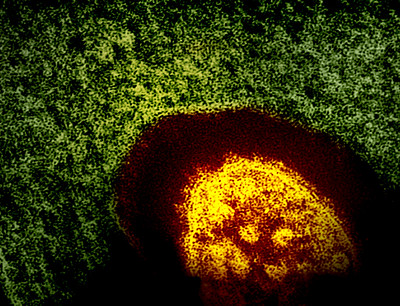- The Food and Drug Administration (FDA) said today that its Vaccines and Related Biologics Advisory Committee (VRBPAC) will meet on May 22 in an open session to discuss and make recommendations on the composition of the 2025-26 COVID-19 vaccines, according to a notice in the Federal Register. The FDA said it is holding the meeting without the usual 15-day public notice due to technical issues and the time-sensitive need for input and public discussion. Pharmaceutical companies need a few months of lead time to manufacture vaccine and get the products cleared for the next respiratory virus season. Last year, VRBPAC made its COVID vaccine composition recommendation on June 5. In a related development, the World Health Organization’s Technical Advisory Committee on COVID-19 Vaccine Composition will meet this month to make its recommendations.
- Over the past few days the US Department of Agriculture (USDA) Animal and Plant Health Inspection Service (APHIS) has reported a few more H5N1 avian flu detections in dairy cattle and poultry. The virus was detected in 4 more dairy herds, all in Idaho, raising Idaho's total to 90 and the national total to 1,052 from 17 states. In poultry, APHIS confirmed new detections involving a backyard flock in Indiana and farms in Illinois and North Dakota. The agency also reported four more detections in other mammals in two states, including foxes in three New York counties (Madison, Onondaga, and Tompkins) and a domestic cat in Ada County, Idaho. All have mid to late April sample collection dates.
Quick takes: FDA advisers to weigh COVID vaccines, H5N1 in US cows and poultry
More measles cases in North Dakota; Canadian outbreaks grow

North Dakota has reported five more measles infections in Williams County, raising the state outbreak total to nine cases. The new case-patients aren't contacts of previously reported measles patients, but they were unvaccinated, which points to possible community transmission. There were exposures at three schools and a Walmart.
These are the first people to have confirmed measles infections in North Dakota since 2011.
In other US news, Los Angeles County has reported its fourth measles case of the year, which involves an international visitor. Officials said the traveler was not infectious during the time of travel.
"As LA County residents begin to travel this summer and with measles cases increasing among those who have recently traveled, we remind everyone that the best way to protect yourself and your family from infection is with the highly effective measles vaccine," said Muntu Davis, MD, MPH, Los Angeles County health officer, in a press release.
Possible community spread in Manitoba
In Canadian measles developments, Manitoba health officials are seeing spread beyond contacts, hinting at potential community transmission through schools or perhaps bus routes, according to the Winnipeg Sun. Previous cases in the province had all been related to travel or direct contact with an infected person.
Nova Scotia has reported its first case of the year, a Halifax resident who had received one vaccine dose and had recently traveled outside Canada. A media report said the patient is an adult who had traveled to the United States.
Finally, Ontario reported 140 cases over the past week, with measles spread mainly occurring in the southwest area in rural Mennonite communities. Ontario now has 1,383 cases, including 98 patients who required hospitalization.
FDA to make unannounced inspections at foreign food, drug manufacturing sites
The Food and Drug Administration (FDA) said yesterday that it plans to expand unannounced inspections at foreign sites that produce food, essential medicines, and other medical products for US consumers, a move agency officials say will ensure that foreign companies receive the same level of oversight as US companies.
The FDA conducts an estimated 3,000 foreign inspections each year in more than 90 countries, but foreign firms get advanced warning and often have weeks to prepare for the inspections, which agency officials say undermines the inspection process. In contrast, the FDA's 12,000 annual inspections of domestic food and drug manufacturing sites are pre-announced only in specific programs and cases.
Despite the advanced warning, the FDA said, serious deficiencies were found more than twice as often in foreign manufacturing sites as domestic sites.
Ending the 'double standard'
FDA Commissioner Martin Makary, MD, MPH, called the move a "key step" in a broader strategy to get foreign inspections back on track.
"For too long, foreign companies have enjoyed a double standard—given advanced notice before facility inspections, while American manufacturers are held to rigorous standards with no such warning," Makary said in an FDA press release. "That ends today."
The FDA said it will also evaluate its policies and practices to find other ways to improve the foreign inspections program and maintain the integrity of the oversight process. Among the changes will be clarifying policies for FDA investigators to refuse travel accommodations from regulated industries.
New data show sustained declines in chlamydia, syphilis among doxy-PEP users
%20(1).jpg)
A study conducted at a sexual health clinic in San Francisco found sustained significant declines in cases of chlamydia and syphilis among those who used doxycycline post-exposure prophylaxis (doxy-PEP) nearly 2 years after it was introduced, with a smaller effect on gonorrhea, researchers reported yesterday in Clinical Infectious Diseases.
In the study, researchers with the University of California, San Francisco and the San Francisco Department of Public Health analyzed data on 2,524 doxy-PEP users and 2,068 non–doxy-PEP users in San Francisco over 96 weeks after the intervention—which involves taking a dose of doxycycline within 72 hours of unprotected sex—was offered to all patients at a large sexual health clinic in the city. Implementation of the intervention was based on a randomized trial, conducted in San Francisco and Seattle, that in 2023 showed significant declines in chlamydia, syphilis, and gonorrhea among doxy-PEP users compared with those who received standard care.
Using an interrupted time series analysis, the researchers compared sexually transmitted infection (STI) rates in the five quarters before and after the introduction of doxy-PEP to determine whether the large declines initially observed after the release of citywide doxy-PEP guidelines were sustained.
Dramatic decline in rates of chlamydia, syphilis
The analysis showed a significant decline in all individual STIs in the doxy-PEP group, most notably (83%) for combined rates of chlamydia and syphilis (adjusted odds ratio [AOR], 0.17; 95% confidence interval [CI], 0.12 to 0.25) and less for gonorrhea (AOR, 0.56; 95% CI, 0.44 to 0.71). STI rates in doxy-PEP users after initiation were statistically similar to those in patients who never took doxy-PEP, despite a greater number of condomless sex partners over the same period.
The study authors note that while gonorrhea rates did initially decline in users after starting doxy-PEP, they began to increase again toward the end of the analysis, which could indicate that gonorrhea resistance to doxycycline is increasing.
"As doxy-PEP uptake increases globally, future studies should examine doxy-PEP adherence, effectiveness, and impact on antimicrobial resistance," they wrote.











